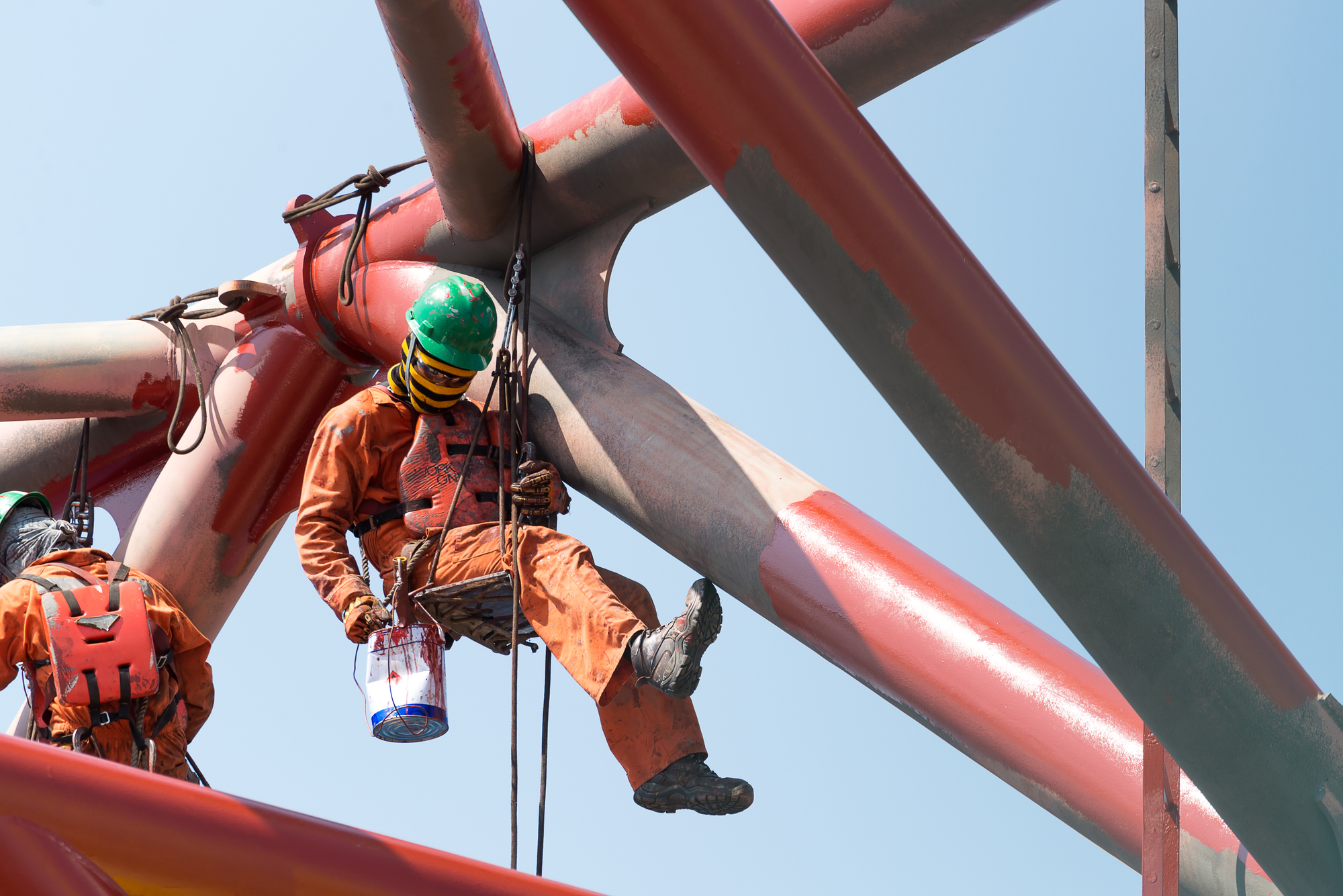What is Fall Protection?
Fall protection refers to the collective measures taken to prevent falls and or to minimize injuries from falls. Fall protection is usually required when working at a height that is over 4 to 6 feet above a lower level and 10 feet above a lower level when working on scaffolds with guard rails.
In the construction industry, over 60 percent of deaths are caused by falls. That is why fall protection is a top priority when working at height. Fall protection is comprised of the following:
- Installation of guard rails around scaffolds and open platforms that are elevated at a height above ground level.
- Installation of guard rails around or placing toe boards above machines and work equipment that are dangerous for workers to fall into.
- Providing extra support on fragile surfaces by placing toe-boards across them and covering holes.
- se of fall-arrest equipment such as safety harnesses and safety nets.
Dropped Objects Protection is Often Overlooked
Although there has been massive development over the years in fall protection, the safety standards in regards to falling objects have been lagging in development. Recently, there has been a push to be more aware of implementing plans, housekeeping guidelines, and tethering hand tools with lanyards. Unfortunately, specialized equipment had little to no current solutions available in the marketplace until Airtias came along. We provide custom tethering solutions for specialized equipment like ultrasonic testing devices.
Custom tethering solutions help companies with their overall dropped object prevention program. They not only reduce injury and fatalities but help keep projects on schedule and improve the bottom line due to fewer costs with damaged or lost equipment.
Recommended Best Practices
Work at height may be inevitable in most construction work, but the risks involved can be minimized through the following work at height best practices:
Avoid work at height whenever practicable.
This applies to both employers and employees. If a specific job can be done without having workers to climb up a steep height, employers should opt for that measure. Employees are also encouraged to refuse a job if the risks are deemed more significant than what the job is worth.
Use appropriate safety equipment.
There are several types of equipment used to help ensure safety when working at height:
Working equipment
- Ladders
- Scaffolds
- Scissor Lifts
- Aerial Lifts
Personal safety equipment
- Protective headgear (hard hats)
- Protective hand gear (leather or rubber gloves)
- Protective footwear (working boots or shoes)
- Protective eyewear and masks (goggles, welding masks, gas masks, etc.)
Personal fall arrest equipment
- Safety full-body harnesses
- Shock-absorbing lanyards
- Anchorage devices
- Hard hat or helmet with chin strap
- Rope grab devices
- Suspension loops
Dropped object prevention equipment
- Equipment safety harnesses & tethers
- Anchorage devices
- Tool safety lanyards
- Suspension harnesses with rope grab devices
- Tool buckets/boxes with covers
- Safety netting, meshes, and other mitigation barriers
- Secondary securing devices (chains, wires, pins, and other connectors)
Regular inspection of safety equipment.
Safety equipment and materials should be frequently inspected for wear and tear because material damage will render them ineffective in keeping workers safe during work at height. Employers should replace damaged equipment to make sure that workers are equipped with functional gears.
Proper training in workplace safety.
The best way to prevent safety risks is to ensure that all workers are adequately trained and certified. Workers who are not trained in the industry often make mistakes and compromise the safety of the whole work team.
Both employers and employees have the responsibility to ensure everyone’s safety when working at height. The risks are already given in this kind of job. The best way to prevent these risks is by complying with standard regulations. This will ensure that everyone is working with the same goal in mind—staying safe while getting the job done.

